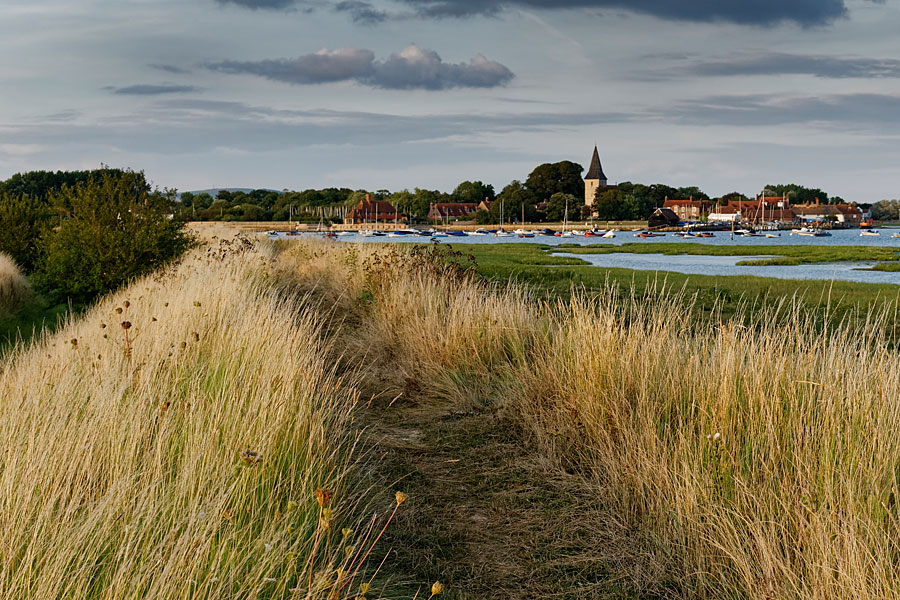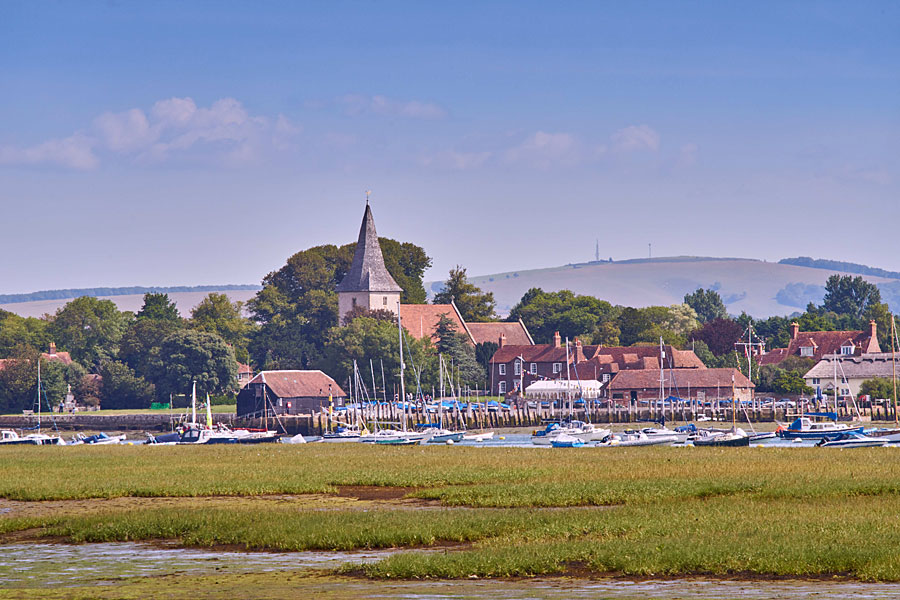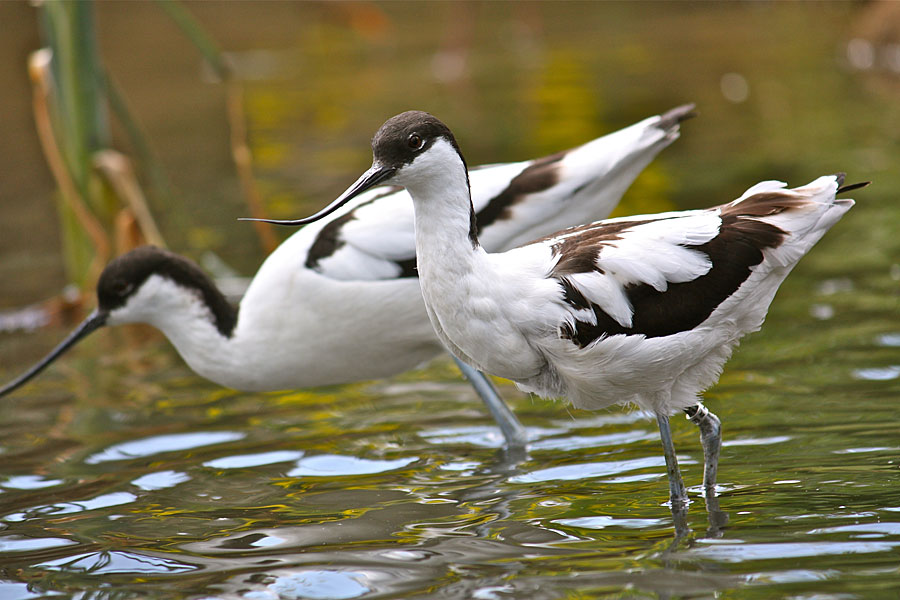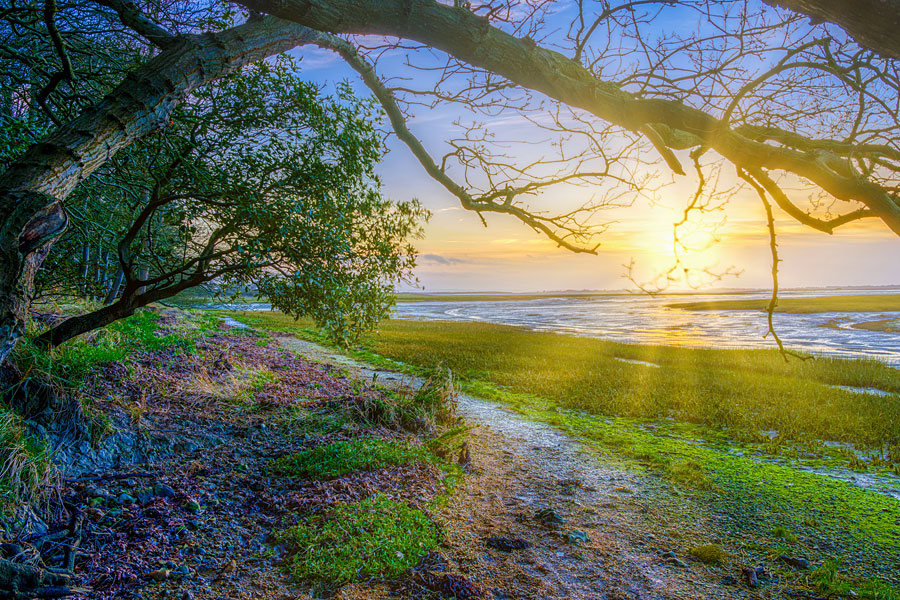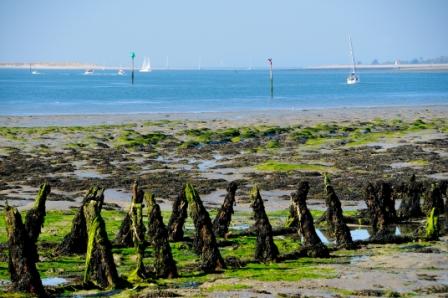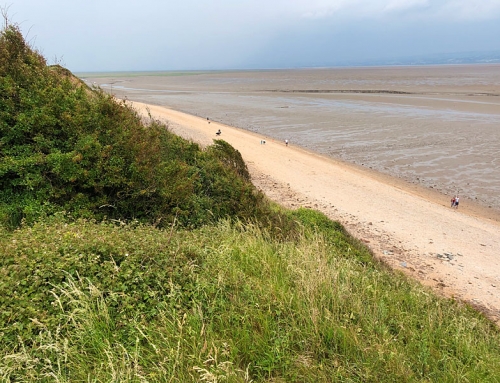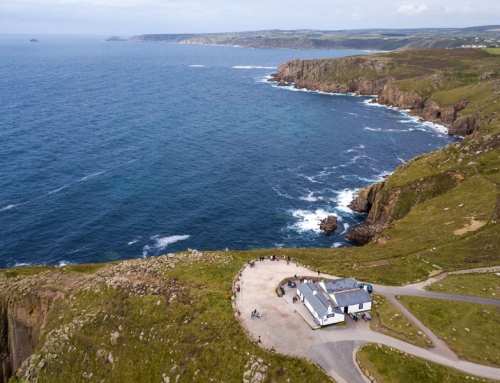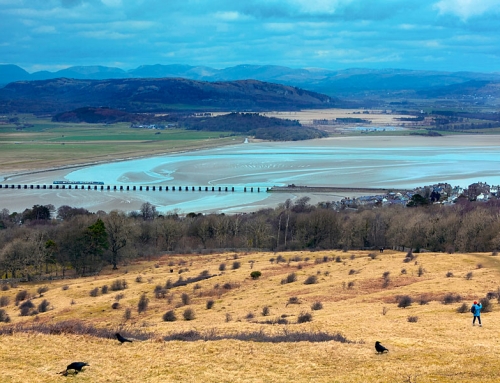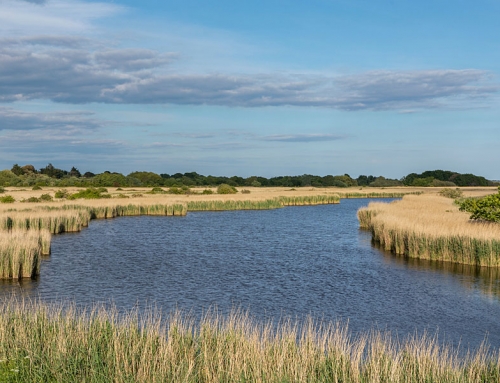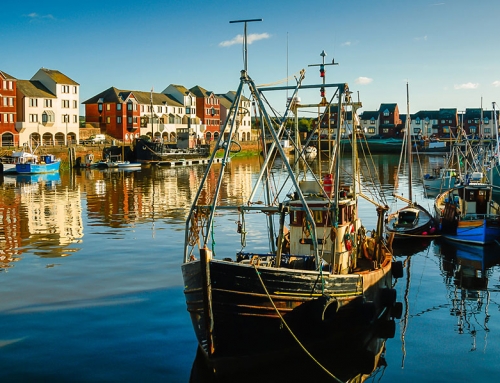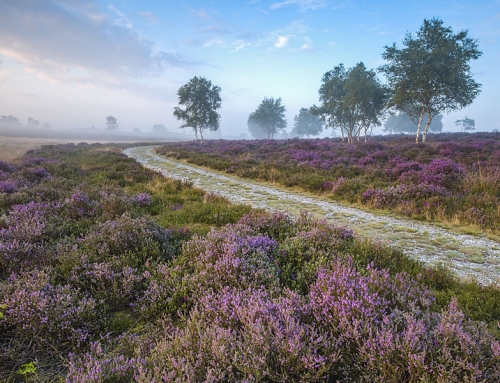Roger Butler enjoys avocets and watery channels in Chichester Harbour
A WHIFF OF SALTY AIR drifted over the Slipper Mill Pond at Emsworth. This saline lagoon by the northern edge of Thorney Island was built in the 1780s and powered a flour mill until 1936. Today, the pool is managed for its wildlife interest and the boats moored in the adjacent muddy creek hinted at the maritime heritage of Chichester Harbour, where tidal channels and hidden inlets resemble a tangle of cooked spaghetti.
A bustling modern marina, with striking stilt-like buildings, was the gateway to the coast and a series of wild marshes and pebbly strands. Curlews echoed over the shining silt on either side of Nutbourne Channel and a little egret was a Persil-white sentinel at the head of a narrow tributary. Bright sunshine dazzled against the pale horizons at West Itchenor and Longmere Point.
The path hugged the shore beyond Prinsted and swung south towards Chidham Point. Wildfowl had left jet black trails across pools covered in bright duckweed and a reed bunting proudly surveyed its damp kingdom from the top of a tall rush.
Across the mudflats, the eastern end of a channel known as the Great Deep was visible. This broad sweep of rushing water slices right through Thorney Island and acts as a moat to a former RAF base. Locals claim a large plane once missed the runway and still lies entombed somewhere out in the sludge. And when rescue vehicles were sent they got stuck too!
Beyond the point, I pushed through dense blackthorn whilst keeping a wary eye on the neighbouring ditch. The scratchy branches eventually won the day and I clambered down to the shingle by Nutbourne Marshes. A couple of avocets swayed back and forth by a meandering rithe – the local name for the tortuous rivulets which are revealed twice a day by the falling tide.
Curlews echoed over the shining silt on either side of Nutbourne Channel and a little egret was a Persil-white sentinel at the head of a narrow tributary.
Failed land-reclamation
It was all change at Cobnor Point, where a band of unusual twisted oaks formed a frilly fringe at the foot of the low grassy cliff. These looked half-aquatic and their contorted branches could have been the tentacles of a huge octopus. Each tree seemed to be stretching every sinew in an effort to reach the sea and dappled light turned their freshly emerged leaves into a hue of buttery yellow.
A strange row of well-worn double stakes ran out across the nearest sandbank. These stretched for well over a mile and were placed here back in the 1870s by a group of local farmers who hoped to build a dam across Thorney Channel in order that the land could then be reclaimed for agriculture. 150 men laboured to infill the 3,000 stakes with chalk and stone but, after just seven weeks, the structure breached in a storm. The remaining timbers march out to sea in the manner of a primitive giant millipede.
Two footbridges crossed the entrances to a new lagoon, where soft engineering had created saltmarsh as part of a long term coastal protection plan. Waders were busily poking around their new patch and a kestrel hovered over the scrubby woodland at the rear.
On the far side of the channel, the buildings at Bosham Quay glinted like an old-fashioned imperial mint and a number of slipways were reminders of the times when this part of Sussex was alive with sea-going trade.
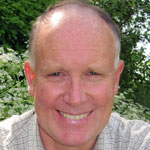
Roger Butler – author and OWPG member
This article is due to appear in a UK walking magazine 2021, and is re-published here with the author’s permission. © Roger Butler 2020. All rights reserved.
Roger Butler is a geographer and landscape architect turned freelance writer, photographer and lecturer. He contributes to a wide range of magazines and lectures throughout the UK. His interests include hill walking, wildlife and the countryside, canals and industrial archaeology. He is a Fellow of the Royal Geographical Society, a Licentiate of the Royal Photographic Society and a Chartered Member of the Landscape Institute. He is also a member of the Outdoor Writers and Photographers Guild and is available for commissions and new projects.
Contact: roger522@btinternet.com
Books and maps for this part of the coast

